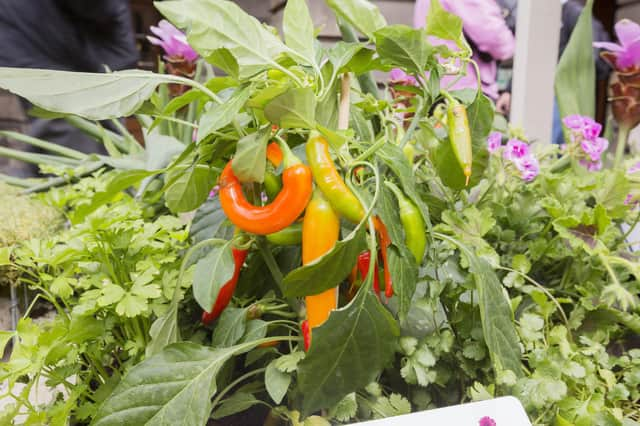Passions: Want to add some heat to your life? Try growing your own chillies


As we inch closer towards spring at the start of each year, my thoughts turn to generating some heat. But I don’t mean heat on the Kelvin scale, I mean on the Scoville scale.
There are thought to be up to 4,000 varieties of chillies - capsicum - encompassing a rich array of shapes, sizes, colours, flavours and intensity.
Advertisement
Hide AdAdvertisement
Hide AdThe Scoville scale, named after US pharmacist Wilbur Scoville, measures their potency based on concentration levels of capsaicin - the chemical responsible for the heat.
The Bell pepper props up the table, with zero Scoville heat units.
The heat then builds through well known varieties such as Tabasco, Serrano, Bird’s Eye and Cayenne, until things start to get uncomfortable.
Some of the names - such as Trinidad Moruga Scorpion and Naga Viper - serve to warn off sensible people and attract masochists.
The fearsome Carolina Reaper, boasting around two and a half million Scoville heat units, topped the table until last year when the monster’s Dr Frankenstein - US breeder Ed Currie - went one step madder with Pepper X.
My own tolerance to heat is probably about average. I’m not sure I could handle much hotter than a Scotch Bonnet and I have no burning desire to try.
But I would like to have a go at growing some “superhots” (as they are known among aficionados), just as I’d like to grow all sorts of other chillies.
There are plenty of online stores that stock impressive collections of seed and I pick two or three each year. I currently have Hungarian Long and Jalapeno NuMex Pinata sitting on my windowsill ready to sow.
Advertisement
Hide AdAdvertisement
Hide AdThere is something deeply satisfying about watching the seeds germinate and nurturing the seedlings into healthy plants. In summer the plants flower and the flowers turn into peppers. By late summer and through the autumn, your efforts should be rewarded with a crop of chillies. What you don’t use can be frozen. Some people make chilli sauces, or dry the peppers out to grind them into chilli powder.
With so many varieties to try and so many things to do with them, you could almost say chillies are the spice of life.
Paul Wilson is Assistant Editor at The Scotsman